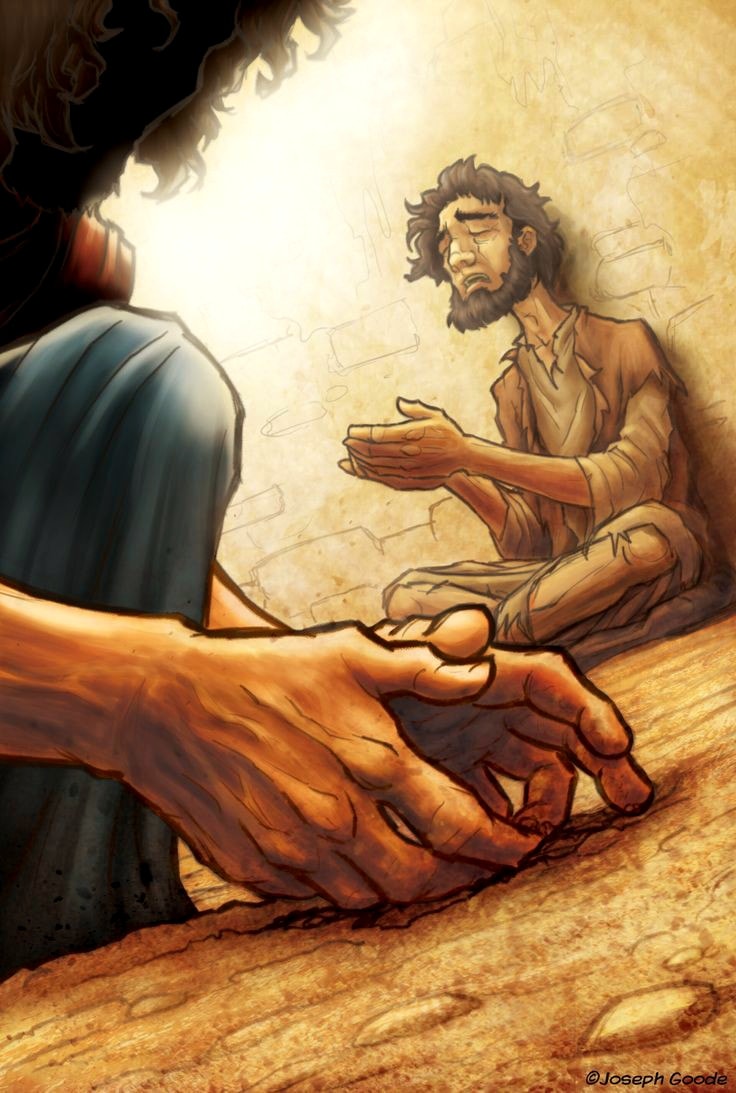
Jn. 9: 1-41
The fourth Sunday of Lent invites us to witness Jesus heal both physical and spiritual blindness in a man who was born blind. As they encounter this person, who comes across as a blind beggar, Peter poses the question of whether this man was born blind because of the sins of his parents or because of his own sins. Jesus cleared up their superstitious idea that it was because of someone’s sins. Instead, it was because God chose that person to show the world His glory.
Immediately, Jesus mixed salvia with mud and applied it to his eyes, then asked him to wash at Siloam. Why did Jesus ask the blind man to follow this procedure? He could have healed him either with his words or a mere healing touch. It was once thought that saliva had medicinal properties. Another view is that God created humans out of mud, and Jesus repeats the same procedure to restore the defect of this person who was born blind. Asking him to wash himself at the pool of Siloam symbolizes the sacrament of baptism and the beginning of a new life as the disciple of Jesus. According to the prophet Elijah’s instruction, the Syrian commander Naaman washed himself in Jordan and received healing, as recorded in the Book of Kings (2 Kg. 5). Similarly, the blind man followed the instructions of Jesus, and he was restored to his sight. The people of Israel knew him as a blind beggar before. Now no one could recognize him and could not believe that he was born blind, especially the religious leaders. When they enquire about the man who healed him, though he did not see Jesus, he gives witness to Jesus, acknowledging him as his healer. Whereas, the paralytic man (Jn. 5), who had been lying close to Bethsaida for thirty-eight years, did not even inquire about the whereabouts of Jesus once he had been healed. Furthermore, when he learns the name of Jesus, he informs the religious leaders, causing further trouble for Jesus. Whereas this man stands for Jesus even at the threat of the members of his community.
The religious leaders could not accept the testimony of this man. Therefore, they called his parents for an explanation. They acknowledge the fact that he was born blind, and that his healing was not a cooked-up story. Though they knew Jesus was the healer, they did not reveal him out of fear. Again, the man who experienced healing repeatedly acknowledged that it was Jesus who healed him and challenged religious leaders to get rid of their duplicity and lack of faith. When he was blind, he lived as a beggar, and he was considered part of the Jewish community. Now that he has his eyesight and dignity restored, they have sent him out of the community. Regardless of his loss, he refused to deny the person of Jesus. Finally, we see Jesus grant him another encounter with him, wherein Jesus reveals himself to him. He was empowered by his faith and became a follower of Jesus.
Dear friends, as we reflect on this gospel passage today, let us be sure that all of us are chosen instruments of Jesus, everything that happens in our lives is with his knowledge. The event that we think of as tragic, Jesus could transform it as a moment of grace wherein we could experience his healing and redeeming love. The life of a man born blind teaches us that Jesus will intervene in our lives at the right time and restore us with both spiritual and physical insight to recognize his presence as our constant companion on our journey of life. May this season of Lent help us to deepen our awareness of the presence of the Lord in our lives…